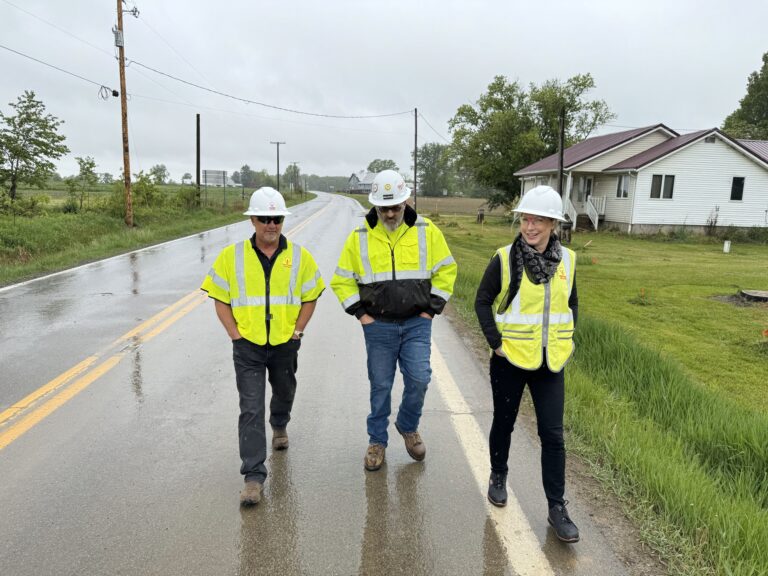In today’s utility sector, the stakes are sky-high. Aging infrastructure, unpredictable climate risks, and rising customer expectations create a perfect storm of challenges for utility professionals and stakeholders. When failures strike—be it power outages, equipment breakdowns, or system inefficiencies—the ripple effects are immediate: disrupted services, frustrated customers, and steep financial losses. But what if utilities could see these failures coming? What if they could act before disaster strikes? That’s where predictive analytics for utilities comes in, offering a game-changing shift from reactive fixes to proactive, data-driven strategies.
Why Predictive Analytics for Utilities Is a Must
Utilities have always wrestled with risk. Think about it: aging transformers humming past their prime, storms knocking out power lines, and regulators demanding more accountability. Deloitte Insights paints a stark picture—80% of major power outages from 2000 to 2023 stemmed from severe weather like storms, wildfires, and heatwaves. Traditional approaches to maintenance and risk management, while tried-and-true, just don’t cut it in this fast-evolving world. They’re too slow, too reactive, and too costly when things go wrong.
Predictive analytics flips the script. By sifting through mountains of data—real-time sensor readings, historical failure logs, even weather forecasts—utilities can spot the warning signs of trouble. It’s like having a crystal ball that highlights which assets are on the brink and when they might fail. This foresight lets utilities shift gears, targeting maintenance where it’s needed most and dodging the chaos of unexpected breakdowns. For utility professionals, this means less guesswork and more control over a system under constant pressure.
How Analytics Sees the Future
So, how does this work? It starts with data—tons of it, pouring in from every corner of the utility network. Here’s what feeds the machine:
- IoT Sensors: Embedded in transformers, circuit breakers, and power lines, these tiny powerhouses track real-time stats like temperature, vibration, and load.
- Historical Records: Failure logs, maintenance histories, and work orders reveal how assets have performed over time.
- External Inputs: Weather data—think wind speeds, humidity, or heat indexes—adds context to how the environment stresses equipment.
This data flows into machine learning models that crunch hundreds of variables to predict failure risks. Picture this: a model might weigh an asset’s age, its past breakdowns, and a looming heatwave to flag a transformer at risk. These models spit out two key metrics: health scores (how likely is this asset to fail?) and criticality scores (how bad would it be if it did?). Combine those, and utilities get a clear priority list—fix this transformer now, check that line later. Industry data backs this up: McKinsey & Company notes that some models can predict 45% of transformer failures with impressive precision, giving utilities a head start on planning and repairs.
Here’s the kicker: precision in analytics isn’t just about being right—it’s about being right enough to act. Even a 20% window of accuracy can sharpen resource allocation, making sure crews and budgets go where they’ll have the biggest impact. For utility stakeholders, this is the kind of insight that turns raw data into a strategic edge.
The Tech Behind the Transformation
The tools powering this shift are evolving fast, and in 2025, they’re more potent than ever. Here’s what’s driving the analytics revolution:
- AI and Machine Learning: These are the brains of the operation, spotting patterns in massive datasets and predicting outcomes. Generative AI is even stepping up, suggesting fixes and optimizing grid performance on the fly.
- Internet of Things (IoT): Sensors on everything from poles to pipelines deliver the real-time data that keeps predictions sharp and current.
- Smart Grids: Blending IoT with advanced metering, smart grids create a dynamic, data-rich network that reacts to risks as they emerge.
Together, these technologies build a 360-degree view of asset health. Imagine a utility using AI to cross-reference a transformer’s condition with a wildfire forecast and nearby vegetation growth—all to decide where to send crews first. Utility Analytics highlights this trend, noting how advanced risk modeling ties environmental factors to asset performance, especially in high-stakes regions. For professionals in the field, this isn’t just tech—it’s a lifeline to smarter, faster decisions.
What’s In It for Utilities?
The payoff of predictive analytics for utilities is hard to ignore. Here’s why utility leaders are taking notice:
- Less Downtime: Spotting failures early means scheduling repairs on your terms—not scrambling during peak demand or storms.
- Lower Costs: Planned maintenance beats emergency fixes every time. GlobeNewswire projects the energy and utilities analytics market to hit $7.16 billion by 2029, fueled by these savings.
- Better Reliability: Keeping the lights on, even under pressure, builds customer trust and keeps regulators happy.
- Safer, Greener Operations: Catching issues early cuts risks like oil spills from busted transformers or hazards to field crews.
For utility stakeholders, these wins mean a stronger operation—more resilient, more efficient, and more profitable. It’s not just about dodging disasters; it’s about running a tighter ship in a world that demands it.
The Roadblocks to Watch
Of course, it’s not all smooth sailing. Rolling out predictive analytics for utilities comes with its share of hurdles:
- Data Silos: When info is locked in separate systems, it’s tough to get the full picture. Utilities need solid data governance to break those barriers.
- Skill Shortages: Data scientists don’t grow on trees. Training staff or partnering with experts is a must to keep pace.
- Old Habits: Moving from “fix it when it breaks” to “predict and prevent” takes a cultural shift—and not everyone’s on board yet.
- Data Quality: Garbage in, garbage out. If the data’s messy or incomplete, predictions falter.
These aren’t dealbreakers, but they’re real. Logic20/20 says that utilities ignoring these gaps risk falling behind. For professionals tackling this shift, it’s about laying the groundwork—clean data, skilled teams, and a willingness to rethink the status quo.
The Future Is Now
Looking to 2025 and beyond, analytics in utilities is only getting sharper. Next-gen AI, beefed-up risk indicators, and tighter integration with smart grids will push predictions to new heights. As climate risks—like fiercer storms and wildfires—ramp up, analytics will be the backbone of resilience, blending weather data with asset insights to stay one step ahead.
For utility leaders, this isn’t just about keeping up; it’s about leading the charge. Embracing analytics means fostering a culture where data isn’t just numbers—it’s the key to smarter decisions. The utilities that dive in now will be the ones setting the pace tomorrow.
Wrapping It Up
In a world where complexity and risk are the norm, utilities can’t afford to play catch-up. Predictive analytics hands them the tools to see failures coming, optimize maintenance, and keep services humming. With AI, IoT, and smart grids in the mix, the path to better risk management is clear—and the benefits, from cost savings to reliability, speak for themselves.
But it’s not just about tech. Success hinges on tackling data silos, building skills, and embracing change. For utility professionals and stakeholders, the takeaway is simple: analytics isn’t a luxury—it’s the future. Those who harness it will navigate the challenges ahead with confidence, delivering value to customers and strength to the bottom line. At Think Power Solutions, we help utilities turn data into actionable insight—bridging gaps, building capabilities, and driving smarter outcomes. Let’s power progress, together.



